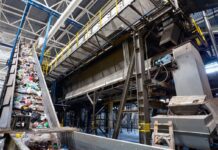
A new study led by RMIT researchers has revealed that the majority of Australians believe food packaging waste is a bigger environmental issue than food waste even though the true problem lies in people’s knowledge of how packaging might help prevent food waste.
The research, supported by the Fight Food Waste Cooperative Research Centre (CRC), polled 965 Australian consumers about how they felt packaging contributed to less food waste.
Consumers’ negative opinions of packaging, according to RMIT project leader Professor Linda Brennan, are a result of the belief that it is a single-use waste item that must be discarded after the food has been consumed.
“A lot of people don’t realise packaging can play an important role in preventing food waste,” said Brennan, from RMIT’s School of Media and Communications.
She continued by saying that food can remain fresher for longer and be protected from harm with packaging created with the goal of reducing food waste.
Alternative packaging designs to preserve food were presented in a final report that summarised the team’s five-year research.
Suggestions included better date labelling, divided portions for bulk foods, resealable packaging and clearer communications on how to best avoid bacterial contamination.
Although single-use plastic was detrimental to the environment, co-author and RMIT Associate Professor Lukas Parker noted that there were currently very few effective and practical packaging alternatives for particular goods, such as meat.
“Unfortunately, packaging may be unavoidable if we want to reduce food waste, so it’s all about balancing how much plastic is used to save food from waste,” he said.
Parker added, “If we forgo the plastic packaging on some items like steak, it can lead to waste because it will impact the steak’s shelf life.”
Another common misunderstanding, according to Parker, is that composted food does not qualify as food waste.
“While composting food is better than throwing it in a landfill, it may unintentionally lead to the misperception that it’s OK to waste food if it’s being reused for gardening purposes,” said Parker.
Parker noted that producing, processing, transporting, and packaging food requires a significant amount of energy and resources. Therefore, that energy is lost when food is left unfinished and rots in the compost.
In turn, the study stressed that better packaging and clearer instructions are critical to resolving the problem.
Many of these aspects, according to Brennan, might be addressed if packaging was better designed with more detailed directions on how to portion out food or store food for durability.
Bulk purchasing habits can contribute to food waste, particularly in low-income households looking to cut costs, the researchers noted.
While acknowledging the cost of implementing new machinery, processes, and materials, Brennan urges the government to develop public policies to support the industry in reducing waste and designing packaging that preserves food rather than relying solely on consumer education efforts.
“Policy interventions are necessary where there is a clash between consumer desires, industry profit-seeking and societal and environmental wellbeing,” she said.
The team will now start a new project funded by the Fight Food Waste CRC to review and overhaul date labelling and storage instructions on food packaging.
In order to help consumers avoid confusion, the team hopes to provide advice on a nationwide strategy to improve date labelling conventions.
Funding partners for the new project include Sustainability Victoria, NSW Environment Protection Authority (EPA), Green Industry SA and the Department of Environment and Science in Queensland.
















